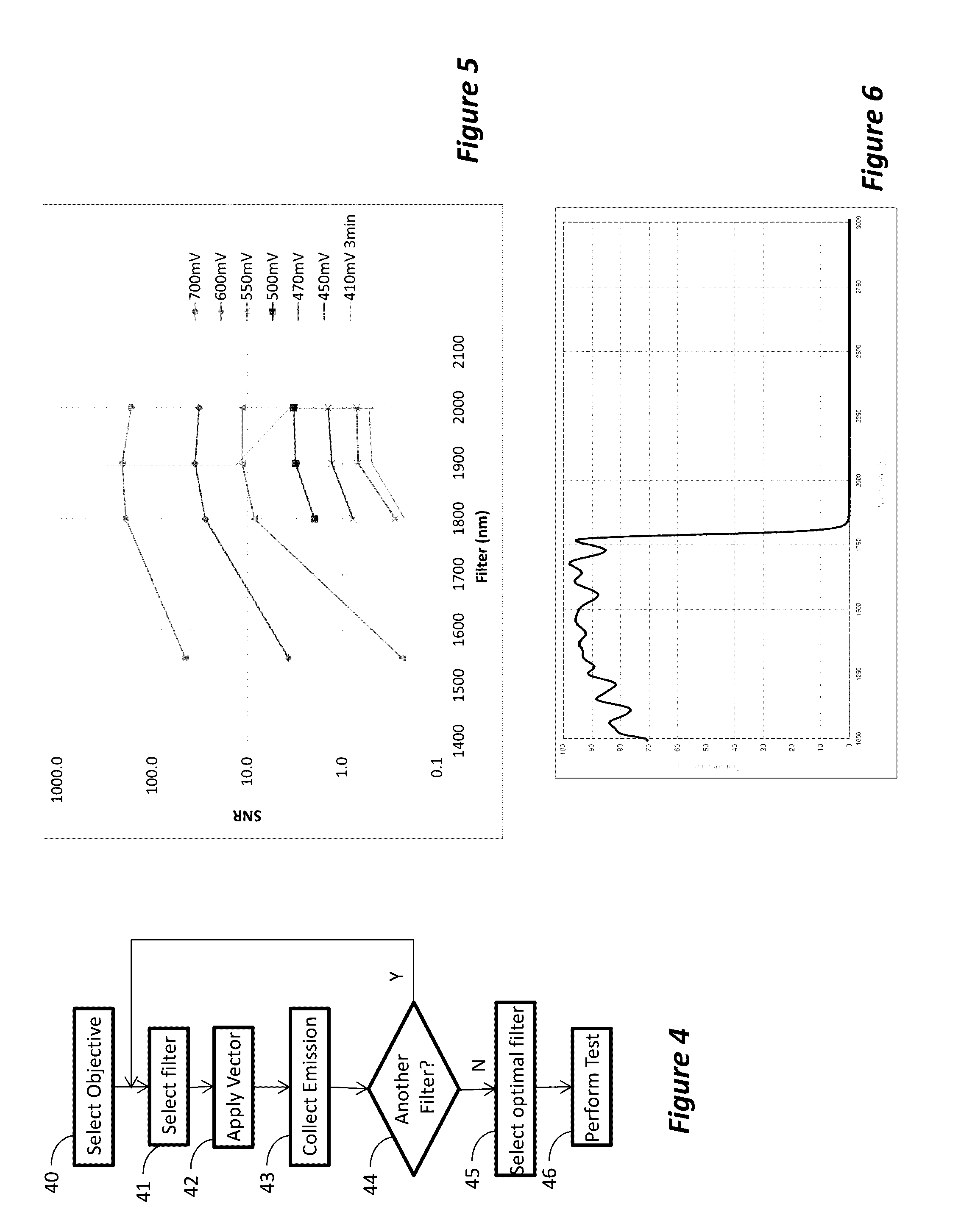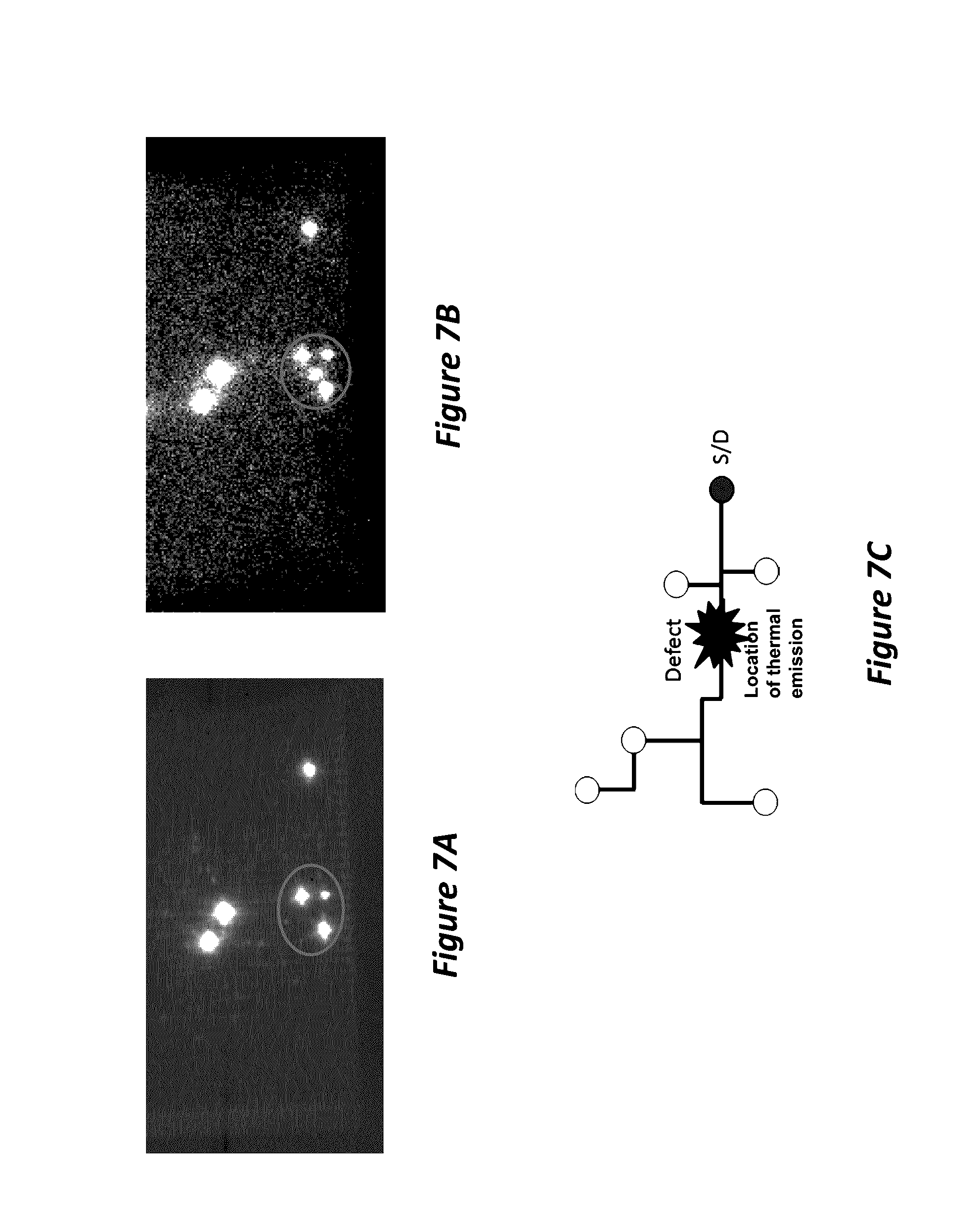Optimized wavelength photon emission microscope for VLSI devices
a wavelength photon emission microscope and wavelength-dependent technology, applied in the field of photon emission microscopy, can solve the problems of inability to have a p-n junction forward-biased with more than 1-2 v, interference more with observations at these longer wavelengths, and very faint hc emission
- Summary
- Abstract
- Description
- Claims
- Application Information
AI Technical Summary
Benefits of technology
Problems solved by technology
Method used
Image
Examples
Embodiment Construction
[0032]Described herein are methods for testing semiconductor chips (IC) for various faults. The testing is done while applying test signal to the IC and performing different types of imaging of the IC during the testing. The different images obtained are compared to identify faults. The methods employ the ability to insert and remove various filters in the optical path of the imaging system. It has been discovered by the inventor that certain faults can be identified by comparing images taken with and without the filters. It has also been discovered by the inventor that certain faults can be identified by comparing optical emission images with thermal images.
[0033]According to one example, test signals are applied to the IC, such that switching transistors emit photons. An emission filter, e.g., a band filter, that passes light with wavelength below 2000 nm or below 1600 nm (if the signal is strong enough), is used to obtain an emission image. This image will basically consist of “d...
PUM
 Login to View More
Login to View More Abstract
Description
Claims
Application Information
 Login to View More
Login to View More - R&D
- Intellectual Property
- Life Sciences
- Materials
- Tech Scout
- Unparalleled Data Quality
- Higher Quality Content
- 60% Fewer Hallucinations
Browse by: Latest US Patents, China's latest patents, Technical Efficacy Thesaurus, Application Domain, Technology Topic, Popular Technical Reports.
© 2025 PatSnap. All rights reserved.Legal|Privacy policy|Modern Slavery Act Transparency Statement|Sitemap|About US| Contact US: help@patsnap.com



